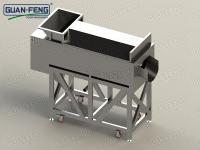Recent Videos
Let's talk!
How Does The Lyophilization Equipment Work
-
There are three main methods to remove water from materials: filtration, evaporation, and drying. Filtering is an effective method for separating solid particles contained in suspension. Evaporation usually refers to the process of vaporization and separation of water contained in a solution or substance due to heat. If the result of evaporation is only the change of substance concentration while the liquid state is still maintained, it is called concentration. If the purpose of evaporation is to remove moisture from solid materials, it is called drying, and if moisture is removed by sublimation under solid conditions, it is called sublimation drying. The drying process of Lyophilization equipment has no chemical change and belongs to the physical process.
Drying is both an ancient unit operation and one of the modern application technologies. At present, people's understanding of drying technology is still very superficial, and in many aspects, there is still a situation of " knowing it but not knowing why". Especially the structure, performance and composition of the dried materials are different, so it is difficult to find a scientific and unified rule. It still needs the continuous efforts of scientific and technological workers to make it mature gradually so as to better serve human beings.
The purpose of drying is to reduce the quality of materials for convenient transportation. Reduce the moisture content of the materials to facilitate long-term storage and storage; In some places, drying is the need of the technological process.
Drying technology is widely used. Drying technology is applied in many fields of the national economy. The main substances to be dried are food, grains, fruits and vegetables, tea, Chinese medicine tablets, and proprietary Chinese medicines, western medicine preparations, dairy products, biological materials, dyes, chemical fibers, paper and pulp, wood and wood products, various polymers, coal, minerals, etc.

